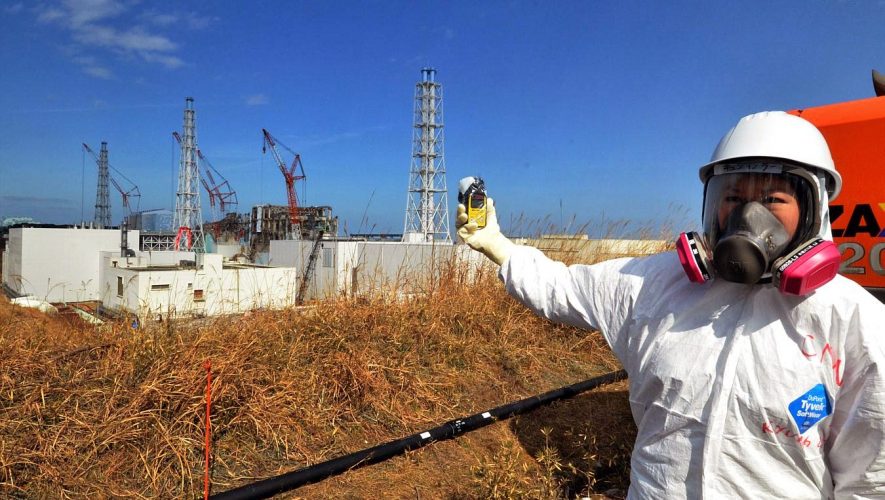Author: Florentine Koppenborg, Technical University of Munich
Ten years after the world watched the explosions at the Fukushima Daiichi Nuclear Power Plant, Japan’s pro-nuclear advocates have lost policy implementation power. As part of the three-yearly energy policy review, Prime Minister Yoshihide Suga’s government needs to decide on the electricity mix for 2030 this year — including the future of nuclear power. But given the need to maintain safety standards and public opposition to building new reactors, Japan’s nuclear target is realistically constrained to no more than an 8–10 per cent share of projected power needs.
In the wake of the 11 March 2011 Fukushima nuclear accident, Japan abandoned big plans for a ‘nuclear state’ and scrapped its 2010 Strategic Energy Plan goal to increase the share of nuclear power in electricity generation to 53 per cent by 2030.
Yet the Japanese government — under nuclear power advocate and then-prime minister Shinzo Abe — continued to pursue nuclear power as a baseload power source despite significant public opposition. The 2015 Long-Term Supply and Demand Outlook envisioned nuclear power making up 20–22 per cent of overall electricity generation by 2030, cementing Japan’s reliance on this power source. Though nuclear restarts did not progress in line with policy targets, the 2018 SEP rehashed this goal and was seen by many as a sign of political support for the nuclear village.
The signs of waning support for nuclear power have been mounting since 2015.
In January 2016, the Abe government acknowledged that the 40-year limit rule on the lifespan of nuclear reactors —which was newly introduced after the Fukushima accident — posed a hurdle for achieving 2030 targets. Rather than call on the Nuclear Regulation Authority to loosen this rule and extend the lifespan of all nuclear reactors beyond 40 years, Abe stressed that the 2030 goal would not be pursued against safety concerns.
Assuming that Japan will strictly adhere to post-Fukushima safety standards, constructing new nuclear power plants is the only option to achieve the government’s goal of generating 20–22 per cent of electricity through nuclear power by 2030. Both Denjiren — the Federation of Electric Power Companies — and Keidanren — the Japan Business Federation — have repeatedly called for the construction of new nuclear power plants.
The 2014 and 2018 Strategic Energy Plans, however, only provided for the construction of additional reactors through the backdoor as a means to reduce Japan’s greenhouse gas emissions, rather than making a clear commitment. Despite Keidanren’s dissatisfaction over lacklustre support and its call for the government to ‘clarify its commitment to the necessity of nuclear power’, the Abe government didn’t adjust course, probably to avoid public ire.
When Japan adopted its Long-term Strategy under the Paris Agreement in 2019, the government again avoided using global warming countermeasures as a backdoor to construct new nuclear power facilities. Instead, it aims to reduce Japan’s ‘dependency on nuclear energy as much as possible, while giving the top priority to nuclear safety and making efforts to expand renewable energy’.
Currently, energy policy deliberations are taking place against the backdrop of achieving carbon neutrality by 2050 and to submit a Nationally Determined Contribution to the United Nations Framework Convention on Climate Change before the end of 2021. This puts pressure on the government to adopt revised 2030 targets that include a higher share of low-carbon energy sources.
In November 2020, Suga stressed that plans to decarbonise the energy sector were not predicated on the new construction or expansion of nuclear power plants. Minister of Economy, Trade and Industry (METI) Hiroshi Kajiyama called nuclear power ‘indispensable’ for Japan’s decarbonisation efforts. Recent METI documents contain the usual phrases about nuclear power as a ‘baseload’ power source, restating that remaining nuclear power plants meet new safety standards. But even METI, a long-standing supporter of nuclear power, continues to remain silent on the question of constructing new nuclear power plants and instead repeats its policy line of reducing dependence.
Government calculations on how much this reliance can be reduced follow a subtraction method. First, the share for nuclear power is determined by subtracting a feasible share of other energy technologies from the demand assumed for 2030. Then, the remaining share is declared to come from nuclear power. Following this method, much depends on renewable energy development.
The share of renewable energy in Japan’s electricity mix has grown considerably over the last few years. Standing at 19 per cent in 2019, Japan was very close to reaching the 22–24 per cent share envisioned for 2030 a decade early. In contrast, nuclear power produced only 6 per cent of electricity in 2019. In December 2020, the government announced support for the development of offshore wind electricity generation capacities of up to 45 gigawatts by 2040.
Ongoing energy policy deliberations offer Japan a chance to set a sustainable and feasible energy policy strategy. Given the decarbonisation target, the sluggish implementation of unrealistic nuclear targets, and recent growth in renewable energy, the government needs to face reality and lower the 2030 targets for nuclear power to a more realistic 8–10 per cent share and adopt higher renewable energy targets of about 40–50 per cent for 2030.
Florentine Koppenborg is a Postdoctoral Fellow at the Chair for Environmental and Climate Policy, the Bavarian School of Public Policy, the Technical University of Munich.


